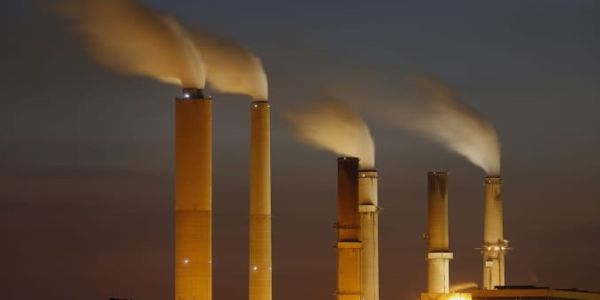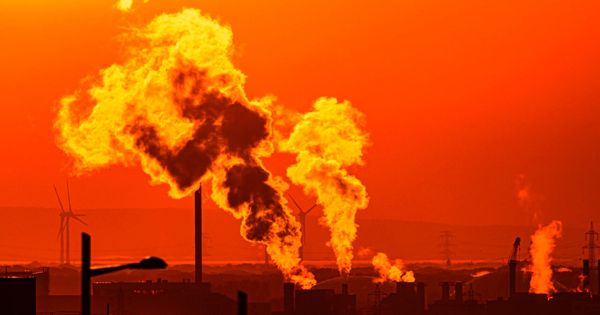According to a new study, the social cost of methane – a greenhouse gas with 30 times the ability to trap heat as carbon dioxide – varies by an order of magnitude between industrialized and developing regions of the world.
How much does one ton of a greenhouse gas cost? When a climate-warming gas, such as carbon dioxide or methane, is released into the atmosphere, its effects can be felt for years, if not decades, in the form of rising sea levels, changes in agricultural productivity, or more extreme weather events like droughts, floods, and heat waves. These effects are quantified in a metric known as the “social cost of carbon,” which is regarded as a critical tool for developing sound and efficient climate policies.
According to a new study conducted by a team of researchers from Lawrence Berkeley National Laboratory (Berkeley Lab) and UC Berkeley, the social cost of methane – a greenhouse gas 30 times more potent than carbon dioxide in its ability to trap heat – varies by an order of magnitude between industrialized and developing regions of the world.
A new study reports that the social cost of methane – a greenhouse gas that is 30 times as potent as carbon dioxide in its ability to trap heat – varies by as much as an order of magnitude between industrialized and developing regions of the world.
The study, which was recently published in the journal Nature, discovered that when economic inequalities between countries and regions are taken into account, the social cost of methane decreases by nearly a factor of ten in Sub-Saharan Africa and increases by nearly a factor of ten in industrialized countries such as the United States. The study calculated a global mean estimate of the social cost of methane of $922 per metric ton (without accounting for inequity), which drops to $130 per metric ton in Sub-Saharan Africa and rises to $8,040 per metric ton in the United States.
“The paper broadly supports previous US government estimates of the social cost of methane, but if you use the number in the way it’s typically used — as a global estimate as if all countries are equal — it doesn’t account for the inequities,” said Berkeley Lab scientist William Collins, one of the study’s co-authors.
David Anthoff, a professor in UC Berkeley’s Energy and Resources Group, and Frank Errickson, a graduate student in the group at the time of the study, were the study’s lead authors. “The Biden administration’s climate policy agenda emphasizes environmental justice and equity as top priorities. We provide a means for them to directly incorporate equity concerns into methane emission regulations “Errickson, who is now a postdoctoral fellow at Princeton University, made statement. “Our findings show that the same climate impact, measured in dollars, causes a greater loss of well-being in low-income regions than in wealthy ones.”

The social cost of methane, like the social cost of carbon, is a metric that is not widely used by the general public but is increasingly being used by government agencies and corporations in making policy and capital investment decisions. Policymakers can weigh present costs against future avoided harms by properly accounting for future damages caused by greenhouse gas emissions. In fact, a working group was established by a recent White House executive order on the climate crisis to provide an accurate accounting of the social costs of carbon, methane, and nitrous oxide within a year.
“President Biden’s action represents a long-overdue return to science-based policymaking in the United States,” Anthoff said. “Catastrophic weather events and wildfires have become more common, and the costs of climate impacts are rising.”
“The social costs of methane and carbon dioxide are constantly used directly in cost-benefit analyses,” Collins said. “You must figure out how to maximize the benefit of a dollar spent on mitigating methane emissions, as opposed to any other way that dollar could be spent. Make certain that you are not using a gold-plated band-aid.”
According to Collins, the head of Berkeley Lab’s Climate and Ecosystem Sciences Division and a professor in UC Berkeley’s Earth and Planetary Science Department, the annual social cost of methane is nearly $300 billion based on the current estimate of global methane emissions of 300 million metric tons per year. “Wet areas will become wetter and dry areas will become dryer, increasing the severity of storms and droughts,” he said. “The cost would include all of the consequences, such as infrastructure damage, increased costs for keeping places cool, health risks associated with heat, and so on.”
While some methane is produced naturally (mostly in wetlands), human activity is responsible for approximately 60% of methane emissions, which include agriculture, fossil fuel production, landfills, and livestock production. It is considered a short-lived climate pollutant, lasting only a decade or so in the atmosphere, compared to more than 100 years for carbon dioxide.
“Given the potency of methane as a greenhouse gas, regulating methane emissions has long been recognized as a critical component for designing an economically efficient climate policy,” Anthoff said. “Our research updates methane’s social cost estimates and fills a critical gap in calculating social costs.”
The price was estimated to be around $1,400 per metric ton during the Obama administration. After accounting for offsetting influences on the climate system, the Berkeley researchers arrived at a global mean estimate of $922 per metric ton. “We believe they overestimated it slightly,” Collins said.
But, more importantly, the uncertainty surrounding the social cost of methane stems from the social side rather than the physics. “As climate scientists, we’ve been working hard to improve our estimates of methane-caused warming,” Collins explained. “However, it has been discovered that the physics side is no longer the major source of uncertainty in the social cost of methane. It has now been transferred to the socioeconomic sector, which accounts for the damages and inequities.”
It is unclear how societies will develop in the future, such as whether they will expand cities along coastlines or in areas prone to flooding or wildfires, or whether they will move away from such areas. “If we choose to mitigate climate change more aggressively,” Collins said, “the social cost of methane drops dramatically.”
“Exploring the relationship between climate change and socioeconomic uncertainties, not to mention the complex but important issues that arise when we account for equity,” Anthoff said, “is a promising area for future research and policy exploration.”
Klaus Keller and Vivek Srikrishnan of The Pennsylvania State University also studied co-authors. The National Science Foundation, the Sloan Foundation, and the Penn State Center for Climate Risk Management all provided funding for the study.
















